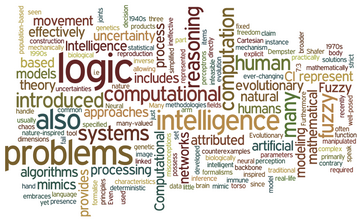
Motivation
A major thrust in algorithmic development is the design of algorithmic models to solve increasingly complex problems. Enormous successes have been achieved through the modeling of biological and natural intelligence, resulting in so-called “intelligent systems”.
Research Works
The best-so-far selection in artificial bee colony algorithm
Anan Banharnsakun, Tiranee Achalakul, Booncharoen Sirinaovakul
Abstract
The Artificial Bee Colony (ABC) algorithm is inspired by the behavior of honey bees. The algorithm is one of the Swarm Intelligence algorithms explored in recent literature. ABC is an optimization technique, which is used in finding the best solution from all feasible solutions. However, ABC can sometimes be slow to converge. In order to improve the algorithm performance, we present a modified method for solution update of the onlooker bees in this paper. In our method, the best feasible solutions found so far are shared globally among the entire population. Thus, the new candidate solutions are more likely to be close to the current best solution. In other words, we bias the solution direction toward the best-so-far position. Moreover, in each iteration, we adjust the radius of the search for new candidates using a larger radius earlier in the search process and then reduce the radius as the process comes closer to converging. Finally, we use a more robust calculation to determine and compare the quality of alternative solutions. We empirically assess the performance of our proposed method on two sets of problems: numerical benchmark functions and image registration applications. The results demonstrate that the proposed method is able to produce higher quality solutions with faster convergence than either the original ABC or the current state-of-the-art ABC-based algorithm.

Read more | August 8, 2014
Job shop scheduling with the best-so-far ABC
Anan Banharnsakun, BooncharoenSirinaovakul, TiraneeAchalakul
Abstract
The Job Shop Scheduling Problem (JSSP) is known as one of the most difficult scheduling problems. It is an important practical problem in the fields of production management and combinatorial optimization. Since JSSP is NP-complete, meaning that the selection of the best scheduling solution is not polynomially bounded, heuristic approaches are often considered. Inspired by the decision making capability of bee swarms in the nature, this paper proposes an effective scheduling method based on Best-so-far Artificial Bee Colony (Best-so-far ABC) for solving the JSSP. In this method, we bias the solution direction toward the Best-so-far solution rather a neighboring solution as proposed in the original ABC method. We also use the set theory to describe the mapping of our proposed method to the problem in the combinatorial optimization domain. The performance of the proposed method is then empirically assessed using 62 benchmark problems taken from the Operations Research Library (OR-Library). The solution quality is measured based on “Best”, “Average”, “Standard Deviation (S.D.)”, and “Relative Percent Error (RPE)” of the objective value. The results demonstrate that the proposed method is able to produce higher quality solutions than the current state-of-the-art heuristic-based algorithms.
Read more | August 8, 2014

The best-so-far ABC with multiple patrilines for clustering problems
Anan Banharnsakun, BooncharoenSirinaovakul, TiraneeAchalakul

Abstract
Clustering is an important process in many application domains such as machine learning, data mining, pattern recognition, image analysis, information retrieval, and bioinformatics. The main objective of clustering is to search for hidden patterns that may exist in datasets. Since the clustering problem is considered to be NP-hard, previous research has applied bio-inspired heuristic methods to solve such problems. In this paper we propose an effective method for clustering using an algorithm inspired by the decision making processes of bee swarms. The algorithm is called the Best-so-far Artificial Bee Colony with multiple patrilines. In the Best-so-far method, the solution direction is biased toward the Best-so-far solution rather than a neighboring solution proposed in the original Artificial Bee Colony algorithm. We introduce another bee-inspired concept called multiple patrilines to further improve the diversity of solutions and allow the calculations to be distributed among multiple computing units. We empirically assess the performance of our proposed method on several standard datasets taken from the UCI Machine Learning Repository. The results show that the proposed method produces solutions that are as good as or better than the current state-of-the-art clustering techniques reported in the literature. Furthermore, to demonstrate the computing performance and scalability of the algorithm, we assess the algorithm on a large disk drive manufacturing dataset. The results indicate that our distributed Best-so-far approach is scalable and produces good solutions while significantly improving the processing time.
Read more | August 8, 2014
Object detection based on template matching through Use of best-so-far ABC
Anan Banharnsakun, Supannee Tanathong
Abstract
Best-so-far ABC is a modified version of the artificial bee colony (ABC) algorithm used for optimization tasks. This algorithm is one of the swarm intelligence (SI) algorithms proposed in recent literature, in which the results demonstrated that the best-so-far ABC can produce higher quality solutions with faster convergence than either the ordinary ABC or the current state-of-the-art ABC-based algorithm. In this work, we aim to apply the best-so-far ABC-based approach for object detection based on template matching by using the difference between the RGB level histograms corresponding to the target object and the template object as the objective function. Results confirm that the proposed method was successful in both detecting objects and optimizing the time used to reach the solution.
Read more | August 8, 2014

Reducing bioinformatics data dimension with ABC-kNN
Thananan Prasartvit, Anan Banharnsakun, Boonserm Kaewkamnerdpong, Tiranee Achalakul
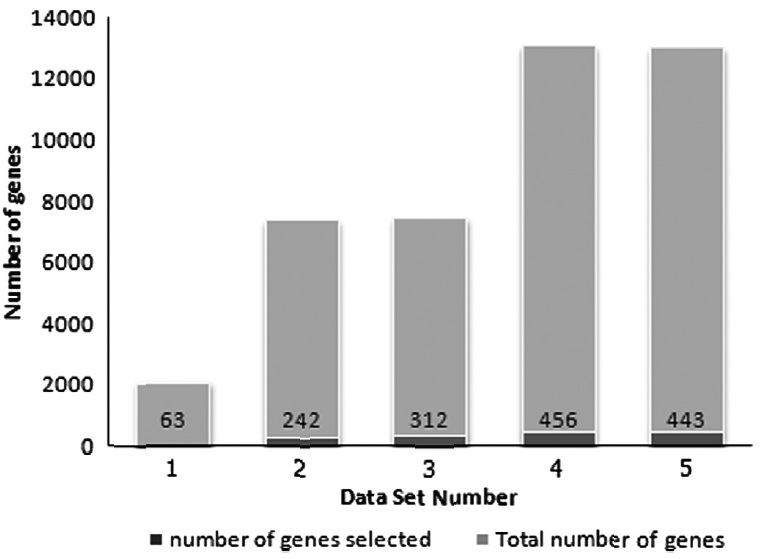
Abstract
Analyzing a large amount of data often consumes extensive computational resources and execution time. However, sometime all data features do not equally contribute to the end results. Thus, it is plausible to identify the major contributing features and use them as representatives of the data. Other features with low contribution can be eliminated to reduce the time/resource consumption in data analysis. One of the promising application domains for such a feature selection process is bioinformatics. The need for dimension reduction, which is the process to reduce unnecessary features from the original data, arises because biological data can be massive, with tens of thousands of features to be explored. The objective of this study is to design an effective algorithm that can selectively remove irrelevant dimensions from data describing complex biological processes while preserving the semantics of the original data. This research proposes the adoption of the Artificial Bee Colony (ABC) as a novel method for data dimension reduction in classification problems. ABC, an efficient heuristic method based on swarm intelligence, is used to select the optimal subset of dimensions from the original high-dimensional data while retaining a subset that satisfies the defined objective. The k-Nearest Neighbor (kNN) method is then used for fitness evaluation within the ABC framework. In this research, ABC and kNN have been modified and bundled together to create an effective dimension reduction method. The proposed algorithm is validated in two distinct application domains: Gene expression analysis, and autistic behaviors study. The experimental results exhibit good solution quality as well as good computational performance.
Read more | August 8, 2014
Multi-focus image fusion using best-so far ABC strategies
Anan Banharnsakun
Abstract
Multi-focus image fusion is a process of combining a set of images that have been captured from the same scene but with different focuses in order to construct an additional sharper image. This process plays an important role in the image processing and machine vision fields. Various algorithms have been developed for this task. The key challenge in the design of multi-focus image fusion algorithms is how to evaluate the local content information of each image from the source images. Simple, but effective, block-based techniques at pixel level are widely used for multi-focus image fusion. However, a fixed block size may not be applicable to every application. A block size that is too small or too large is also not desirable. Hence, optimization of the block size is necessary in order to obtain a fused image that comprises the sharper parts of the source images. Recently, a number of techniques based on evolutionary computation have been applied to block-based multi-focus image fusion. The artificial bee colony (ABC) algorithm is one of the more popular evolutionary computational approaches used to find an optimal solution. In this paper, an efficient and robust block-based multi-focus image fusion method based on the optimal selection of sharper image blocks from source images using best-so-far ABC strategies is proposed. Experiment results show that the proposed method is able to provide good results and outperforms other conventional methods, both visually and quantitatively.
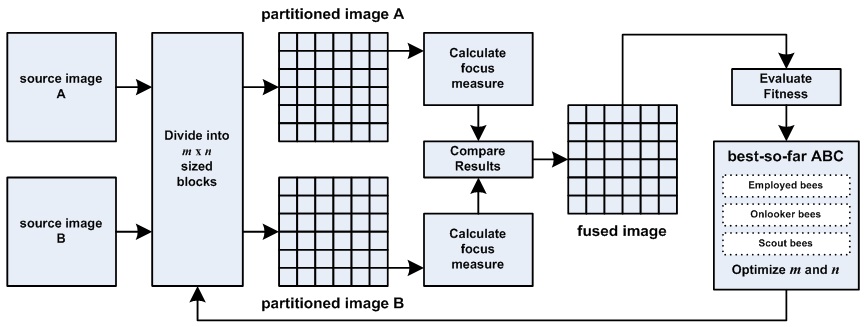
Read more | September 10, 2015
Hybrid ABC-ANN for pavement surface distress detection and classification
Anan Banharnsakun
Abstract
Pavement condition assessment plays an important role in the process of road maintenance and rehabilitation. However, the traditional road inspection procedure is mostly performed manually, which is labor-intensive and time-consuming. The development of automated detection and classification of distress on the pavement surface system is thus necessary. In this paper, a pavement surface distress detection and classification system using a hybrid between the artificial bee colony (ABC) algorithm and an artificial neural network (ANN), called “ABC-ANN”, is proposed. In the proposed method, first, after the pavement image is captured, it will be segmented into distressed and non-distressed regions based on a thresholding method. The optimal threshold value used for segmentation in this step will be obtained from the ABC algorithm. Next, the features, including the vertical distress measure, the horizontal distress measure, and the total number of distress pixels, are extracted from a distressed region and used to provide the input to the ANN. Finally, based on these input features, the ANN will be employed to classify an area of distress as a specific type of distress, which includes transversal crack, longitudinal crack, and pothole. The experimental results demonstrate that the proposed approach works well for pavement distress detection and can classify distress types in pavement images with reasonable accuracy. The accuracy obtained by the proposed ABC-ANN method achieves 20 % increase compared with existing algorithms.

Read more | December 10, 2015
Drug delivery based on swarm microrobots
Anan Banharnsakun, Tiranee Achalakul, Romesh C. Batra
Abstract
Advances in the development of technology have led to microrobots applications in medical fields. Drug delivery is one of these applications in which microrobots deliver a pharmaceutical compound to targeted cells. Chemotherapy and its side effects can then be minimized by this method. Two major constraints, however, must be considered: the robot’s onboard energy supply and the time needed for drug delivery. Furthermore, a microrobot must avoid biological restricted areas which we treat as obstacles in the path. The main objectives of this work were to find optimal paths to targeted cells and avoid collision with obstacles in the paths under a dynamic environment. In this study, we controlled motion of microrobots based on the concept of swarm intelligence. Artificial Bee Colony (ABC), the Best-so-far ABC, and the Particle Swarm Optimization (PSO) methods were employed to implement the collision detection and the boundary distance detection modules. Forces that drove or resisted blood flow as well as pressure in blood vessels were considered to approximate the effects of the environment on the microrobots. Numerical experiments were conducted using various obstacle environments. The results confirm that the proposed approaches were successful in avoiding obstacles and optimizing the energy consumption used to reach the target.
Read more | June 23, 2016

A MapReduce-based artificial bee colony for large-scale data clustering
Anan Banharnsakun

Abstract
The progress of technology has been a significant factor in increasing the growth of digital data. Therefore, good data analysis is a necessity for making better decisions. Clustering is one of the most important elements in the field of data analysis. However, the clustering of very large datasets is considered a primary concern. The improvement of computational models along with the ability to cluster huge volumes of data within a reasonable amount of time is thus required. MapReduce is a powerful programming model and an associated implement for processing large datasets with a parallel, distributed algorithm in a computing cluster. In this paper, a MapReduce-based artificial bee colony called MR-ABC is proposed for data clustering. The ABC is implemented based on the MapReduce model in the Hadoop framework and utilized to optimize the assignment of the large data instances to clusters with the objective of minimizing the sum of the squared Euclidean distance between each data instance and the centroid of the cluster to which it belongs. The experimental results demonstrate that our proposed algorithm is well-suited for dealing with massive amounts of data, while the quality level of the clustering results is still maintained.
Read more | August 11, 2016
A hierarchical clustering of features approach for vehicle tracking in traffic environments
Anan Banharnsakun, Supannee Tanathong
Abstract
Purpose - Developing algorithms for automated detection and tracking of multiple objects is one challenge in the field of object tracking. Especially in a traffic video monitoring system, vehicle detection is an essential and challenging task. In the previous studies, many vehicle detection methods have been presented. These proposed approaches mostly used either motion information or characteristic information to detect vehicles. Although these methods are effective in detecting vehicles, their detection accuracy still needs to be improved. Moreover, the headlights and windshields, which are used as the vehicle features for detection in these methods, are easily obscured in some traffic conditions.
Design/Methodology/Approach - First, each frame will be captured from a video sequence and then is performed the background subtraction by using the Mixture-of-Gaussians background model. Next, the Shi-Tomasi corner detection method is employed to extract the feature points from objects of interest in each foreground scene and the hierarchical clustering approach is then applied to cluster and form them into feature blocks. These feature blocks will be used to track the moving objects frame by frame.
Findings - Using the proposed method, it is able to detect the vehicles in both day-time and night-time scenarios with a 95% accuracy rate and can cope with irrelevant movement (waving trees), which has to be deemed as background. In addition, the proposed method is able to deal with different vehicle shapes such as cars, vans, and motorcycles.
Originality/value - This paper presents a hierarchical clustering of features approach for multiple vehicles tracking in traffic environments to improve the capability of detection and tracking in case that the vehicle features are obscured in some traffic conditions.
Read more | September 23, 2016

Feature point matching based on ABC-NCC algorithm
Anan Banharnsakun
Abstract
Feature point matching is the process of finding an optimal spatial transformation that aligns two arbitrary sets of feature points. It is one of the most fundamental problems in the computer vision domain and is frequently used in object recognition, image registration, camera self-calibration, and so on. Critical to most feature point matching techniques is the determination of correspondence between spatially localized feature points within each image. Moreover, there can be many feature points in either set that have no counterparts in the other. A robust and effective method for feature point matching is thus required and is still a challenge. In this work, an artificial bee colony (ABC) with a normalized cross-correlation (NCC) algorithm called “ABC-NCC” for feature point matching is presented. In this proposed method, both the size and the orientation of the correlation window used for calculating the NCC are determined according to the scale and the rotation direction of the interest points, which are optimized by the ABC algorithm. Experimental results obtained by our method show that the proposed approach works well for feature point matching and outperforms existing algorithms.

Read more | April 5, 2017
Multiple traffic sign detection based on the artificial bee colony method
Anan Banharnsakun
Abstract
Traffic signs play an important role in warning drivers by providing information about traffic restrictions, directions, and road quality in order to make sure that every driver is kept safe. Over the past decade, the development of autonomous vehicles has been an active area of research. Therefore, automatic traffic sign detection is a crucial part of the intelligent transportation systems that can be used in autonomous vehicles to detect traffic signs on the road. The optimization methods based on a biologically inspired computation are very powerful in solving optimization problems. In this work, we consider the traffic sign detection task as an optimization problem and propose the artificial bee colony (ABC) method, one of the most popular biologically inspired methods, as an alternative approach for solving it. In other words, we aim to present an algorithm for the automatic detection of multiple traffic signs with a circular shape based on solutions generated by the ABC method without considering the conventional Hough transform principles. Experimental results obtained by our method demonstrate that the proposed approach works well for multiple traffic sign detection and outperforms other existing algorithms.
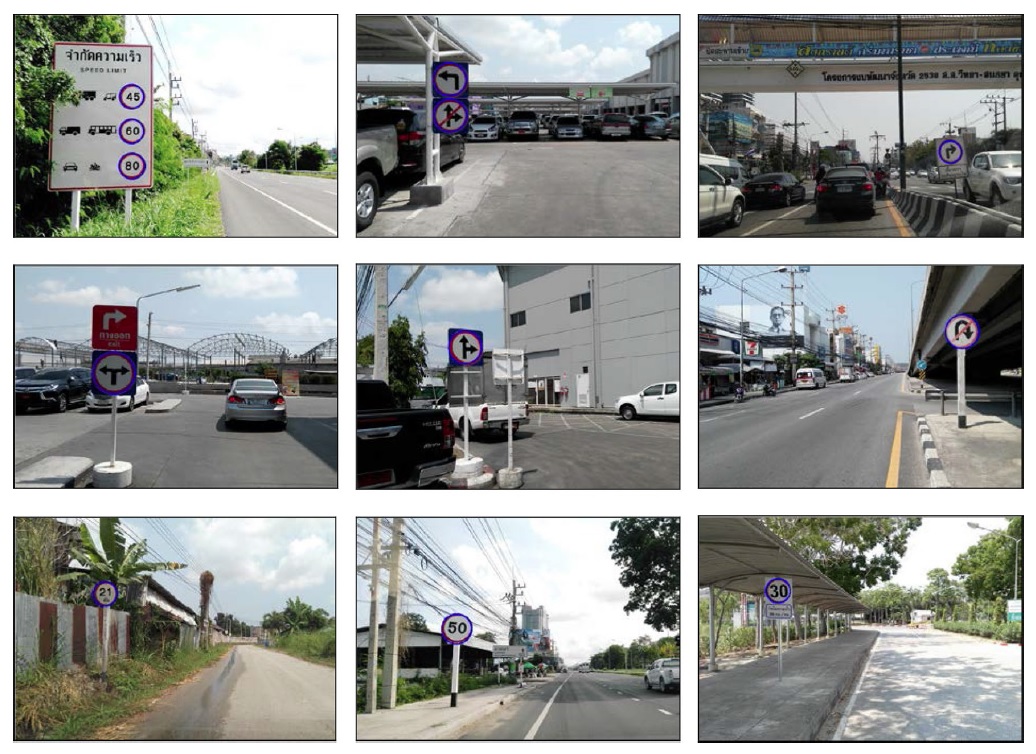
Read more | December 28, 2017
Towards improving the convolutional neural networks for deep learning using the distributed artificial bee colony method
Anan Banharnsakun
Abstract
During the past decade, the dramatic increase in the computational capabilities of chip processing and the lower costs of computing hardware have led to the emergence of deep learning, which refers to a sub-field of machine learning that focuses on learning features extracted from data and classifying them through multiple layers in the hierarchical architectures of neural networks. Using convolution neural networks (CNN) is one of the most promising deep learning methods for dealing with several pattern recognition tasks. However, as with most artificial neural networks, CNNs are susceptible to multiple local optima. Hence, in order to avoid becoming trapped within the local optima, improvement of the CNNs is thus required. The optimization methods based on a metaheuristic are very powerful in solving optimization problems. However, research on the use of metaheuristics to optimize CNNs is rarely conducted. In this work, the artificial bee colony (ABC) method, one of the most popular metaheuristic methods, is proposed as an alternative approach to optimizing the performance of a CNN. In other words, we aim to minimize the classification errors by initializing the weights of the CNN classifier based on solutions generated by the ABC method. Moreover, the distributed ABC is also presented as a method to maintain the amount of time needed to execute the process when working with large training datasets. The results of the experiment demonstrate that the proposed method can improve the performance of the ordinary CNNs in both recognition accuracy and computing time.
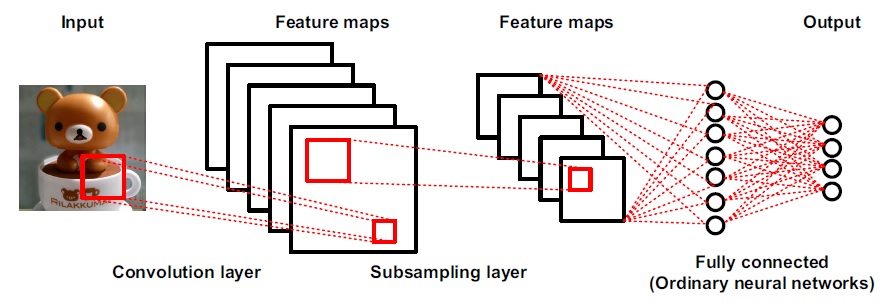
Read more | March 21, 2018
Artificial bee colony approach for enhancing LSB based image steganography
Anan Banharnsakun
Abstract
The development of the internet offers the ability to transmit large amounts of data quite conveniently via networks. However, sensitive data in transmission can easily be intercepted by unknown persons or hackers on the internet. Steganography techniques are thus needed to protect the information being transmitted over the internet. In this paper, a new efficient method based on the artificial bee colony (ABC) approach is proposed to enhance LSB based image steganography. The ABC is employed to optimize the block assignment for embedding a secret image into a host image. However, this block assignment is considered as a combinatorial optimization problem, but the ordinary ABC algorithm is designed to solve numerical optimization problems. A block assignment list, which is used to represent the solutions in the ABC algorithm, is thus introduced and the solution updating process in the ABC based on the block assignment list is also presented in this work. Experimental results demonstrate that the stego image obtained by the proposed method is not only of good quality, but is also able to tolerate certain noise attacks when compared with other recent data hiding techniques in the spatial domain. In addition, the advantage of this proposed method is that it embeds the corresponding block of a secret image into each block of the host image with permutation. Thus, the secret image cannot be recovered from the stego image without knowing this permutation.
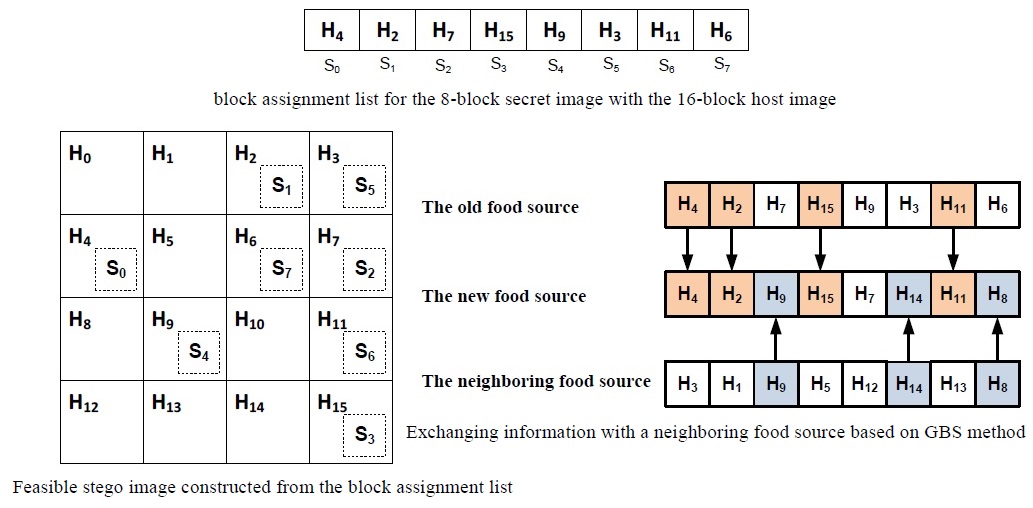
Read more | April 3, 2018
Artificial bee colony algorithm for enhancing image edge detection
Anan Banharnsakun
Abstract
The objective of computer image analysis and processing is to generate images with specific features that make them more suitable for humans and machines to observe and identify. Image edges are the most basic features of image analysis and processing; thus, in order to extract the edges from images, an operation known as “edge detection” is required. Applying an edge detector to an image will help to remove some information that may be regarded as less important, and therefore reduce the amount of data to be processed. As a result, the development of an effective method for edge detection is necessary. Recently, a number of techniques based on evolutionary computation have been applied in order to enhance various tasks in image processing. The artificial bee colony (ABC) algorithm is one of the more promising evolutionary computational approaches used to find an optimal solution. In this paper, an ABC algorithm for enhancing image edge detection is presented. In the proposed method, the ABC is employed to find an optimal edge filter and then, optimize the threshold value in the edge detection process. The experimental results demonstrate that the proposed approach works well for image edge detection with a reasonably high level of accuracy and outperforms existing algorithms.

Read more | October 5, 2018
Artificial bee colony algorithm for content-based image retrieval
Anan Banharnsakun
Abstract
Image retrieval is the process of searching for digital images from a large database. There exist two distinctive research groups, which employ the content-based and description-based approaches, respectively. However, research in the content-based domain is currently dominant in the field, while the other approach is not as widely utilized. Although there are a number of different techniques that are available for image retrieval, the development of more effective methods is still necessary. In recent years, previous research has shown that biologically inspired meta-heuristic algorithms have great potential for use in solving problems in many science and engineering domains. The artificial bee colony (ABC) algorithm is one of the more promising biologically inspired meta-heuristic approaches used to find optimal solutions as it has the advantages of convenient implementation and efficient performance. In this paper, a new efficient method based on a combination of the gray level co-occurrence matrix (GLCM) with the artificial bee colony (ABC), referred to as “GLCM-ABC”, is proposed for use in content-based image retrieval. The experimental results demonstrate that the proposed approach works well for content-based image retrieval, and can classify specific types of material surfaces in images with a reasonably high level of accuracy as well as outperform other existing algorithms.

Read more | January 13, 2020
Aerial image denoising using a best-so-far ABC-based adaptive filter method
Anan Banharnsakun
Abstract
Nowadays, digital images play an increasingly important role in helping to explain phenomena and to attract people’s attention through various types of media rather than the use of text. However, the quality of digital images may be degraded due to noise that has occurred either during their recording or their transmission via a network. Therefore, removal of image noise, which is known as “image denoising”, is one of the primary required tasks in digital image processing. Various methods in earlier studies have been developed and proposed to remove the noise found in images. For example, the use of metric filters to eliminate noise has received much attention from researchers in recent literature. However, the convergence speed when searching for the optimal filter coefficient of these proposed algorithms is quite low. Previous research in the past few years has found that biologically inspired approaches are among the more promising metaheuristic methods used to find optimal solutions. In this work, an image denoising approach based on the best-so-far (BSF) ABC algorithm combined with an adaptive filter is proposed to enhance the performance of searching for the optimal filter coefficient in the denoising process. Experimental results indicate that the denoising of images employing the proposed BSF ABC technique yields good quality and the ability to remove noise while preventing the features of the image from being lost in the denoising process. The denoised image quality obtained by the proposed method achieves a 20% increase compared with other recently developed techniques in the field of biologically inspired approaches.

Read more | February 1, 2023
A new approach for solving the minimum vertex cover problem using artificial bee colony algorithm
Anan Banharnsakun
Abstract
The minimum vertex cover problem is a well-known problem in classical graph theory. It is known as one of the NP-Hard optimization problems, meaning that the best solution cannot be found within an acceptable time. Therefore, to handle this optimization problem effectively, various alternative approaches based on either approximation or metaheuristic techniques have been considered and proposed in the previous literature. However, developing more effective methods to deal with the problem of finding the minimum vertex cover is still challenging. This study proposes a strategy for tackling the minimum vertex cover problem based on the artificial bee colony (ABC) algorithm. The main novelty and contribution of this research are to show that the ABC algorithm can be used as another useful and efficient way to solve the minimum vertex cover problem and also to demonstrate the application of the minimum vertex cover solutions to real-world wireless sensor network problems. The proposed method is evaluated by assessing the algorithm’s performance based on an obtained set of optimal vertices and the amount of computation time in terms of the number of iterations. The empirical results show that the proposed approach can yield satisfactory results and outperform other existing algorithms in finding a set of optimal vertices.

Read more | February 1, 2023
Machine learning techniques for supporting dog grooming services
Natthapon Pannurat, Kanjana Eiamsaard, Chollasit Suthanma, Anan Banharnsakun
Abstract
In recent years, there has been a remarkable surge in the popularity of dog grooming, which has resulted in a growing interest in leveraging cutting-edge technologies to streamline the process and enhance the overall experience. Specifically, computer vision and machine learning techniques have been garnering increasing attention as a means to assist dog groomers in classifying dog breeds. This paper explores the use of machine learning techniques based on Convolutional Neural Networks (CNNs) for classifying dog breeds and estimating the time required for bathing and grooming each dog. The study involves collecting a large dataset of images and corresponding grooming information for a diverse set of dog breeds. The effectiveness of the proposed method is evaluated using a range of performance metrics, including accuracy, precision, recall, and F1 score. Our study suggests that proposed CNNs can be valuable in helping dog owners and groomers identify the correct breed of a dog and estimate the grooming time before receiving the service. The accuracy of classification obtained by the proposed method achieves a 19% increase compared with other recently developed techniques. Finally, this work contributes to the development of a user-friendly application that allows customers to book dog grooming services, providing predictions for dog breeds and estimated grooming time.

Read more | July 21, 2023
Conferences
- Banharnsakun A, Silapunt R, Achalakul T (2007) The parallel simulation model for thin film deposition using the DSMC method, In: Proceedings of the Asian Simulation and Modeling Conference (ASIMMOD2007), pp. 59-65.
- Banharnsakun A, Achalakul T, Sirinaovakul B (2010) ABC-GSX: a hybrid method for solving the traveling salesman problem, In: IEEE Proceedings of the World Congress on Nature and Biologically Inspired Computing (NaBIC 2010), pp. 7-12.
- Banharnsakun A, Achalakul T, Sirinaovakul B (2010) Artificial bee colony algorithm on distributed environments, In: IEEE Proceedings of the World Congress on Nature and Biologically Inspired Computing (NaBIC 2010), pp. 13-18.
- Banharnsakun A, Achalakul T, Batra RC (2012) Target finding and obstacle avoidance algorithm for microrobot swarms, In: the 2012 IEEE International Conference on Systems, Man, and Cybernetics (SMC 2012), pp. 1610-1615.
- Banharnsakun A, Sirinaovakul B, Achalakul T (2012) The performance and sensitivity of the parameters setting on the best-so-far ABC, In: L.T. Bui et al. (Eds.) SEAL 2012, LNCS 7673, pp. 248–257. Springer, Heidelberg (2012).
- Tanathong S, Banharnsakun A (2014) Multiple object tracking based on a hierarchical clustering of features approach, In: N.T. Nguyen et al. (Eds.) ACIIDS 2014, LNAI 8397, pp. 522-529. Springer, Switzerland.
- Banharnsakun A (2018) Artificial bee colony algorithm for solving the knight’s tour problem. In: Proceedings of the International Conference on Intelligent Computing & Optimization (ICO 2018). Advances in Intelligent Systems and Computing, vol. 866, pp. 129-138. Springer, Cham.
- Banharnsakun A (2021) Low-Light Image Enhancement with Artificial Bee Colony Method. In: Proceedings of the International Conference on Intelligent Computing & Optimization (ICO 2021). Lecture Notes in Networks and Systems, vol. 371, pp. 3-13. Springer, Cham.

© Copyright CIR Lab. Designed by Blue Website Templates